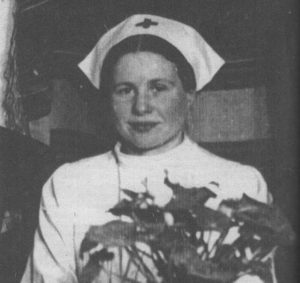“New ideas pass through three periods: (1) It can’t be done. (2) It probably can be done, but it’s not worth doing. (3) I knew it was a good idea all along!” – Arthur C. Clarke
If Ready… Fire… Aim Is the Right Idea
What Does Ready Mean?
Ready, Fire, Aim is my recommended strategy for starting a new business. Most people understand the basic idea: Don’t wait to launch until everything is perfect. There will be time for refining the details later. For every business that fails because of inadequate preparation, nine fail because procrastination.
In a previously published essay on this topic, I argued that the first and most important responsibility of a founder or CEO in launching a business is to move as quickly as possible from the initial idea to a profitable sale. What most wannabe entrepreneurs do instead is spend months and sometimes years in research and development – trying to get everything perfect – before they try to make the first sale.
One of the most important lessons I learned about entrepreneurship was from JSN, a brilliant businessman. He said, “a business isn’t a business until you make your first successful sale. Until then, it’s just an expensive, time-consuming hobby.”
If you can grok that, you can understand that starting a business is always a race against time. You begin with an idea, a certain amount of dollars, and your confidence in the idea. Then you get to work, fueled by these limited resources. It’s a long race, a race in stages, but the finish line of the first step is very simple. It is making your first profitable sale.
Every new business begins with two essential ingredients: an idea and the ambition to make that idea real.
Both are necessary. The ambition must be strong. And the idea must be good. If the ambition is weak, the start-up will fail before the idea is tested. But if the idea is bad, no amount of ambition will make the business succeed.
Anyone interested enough in entrepreneurship to be reading this far, has ambition. Whether that ambition stays or grows or fades depends to a great degree on the “goodness” of the idea.
How Can You Tell – Before You Start Spending Your Time and Money – If Your Idea Is Any Good?
The easiest way to start a new business is to work for several years for a successful company in an industry that appeals to you, learn how they do what they do, and then develop a version of one of their best-selling products that you can make either cheaper or better.
When you take that approach, you are beginning with a proven concept – a product idea that you know, for sure, is in demand. In trying to make your version better – by making it more useful, more appealing, or less expensive – you may err. But because the product is already proven, you should be able to correct that error fairly quickly by testing alternatives.
If you are starting a business about which you have little or no knowledge and experience, the task of figuring out if your idea is a good one is much tougher.
Here are some things you can do…
-
Assess the size of the market.
If you have been working in an industry for several years – and especially if you‘ve been in a sales or marketing role for several years – you should have a good idea of how big the market for your product is. If you are new to the industry, this kind of information is not difficult to find.
Also find out the average size of the companies that comprise the industry. In most industries, there are three levels: 3 to 5 businesses at the top whose revenues comprise about half of the entire industry, a dozen or two in the middle, and many in the third tier.
What you are looking for is a market in which that second tier is a size you believe you can reach. Information marketing, for example, the industry I’ve spent the most time in, is probably a $10 billion industry (excluding the mainstream news media and book publishing). The six or seven industry leaders, including two of my clients, have total revenues of about $4 billion. (Only one is above $1 billion. The rest are about half that.) In the second tier, there are about a dozen companies between $100 million and $300 million, for a total of about $2.5 billion. And then there is a third tier of perhaps 500 businesses with revenues of $10 million to $50 million that comprise the other $3.5 billion.
Your chances of getting into that top tier in fewer than 20 years are not strong. If you would be happy getting into that second tier, with revenues between $100 million and $300 million, your chances are not great, but it is possible. Your chances of getting into that third tier, though – with revenues in the $10 million to $50 million range – should be good.
You have to ask yourself if you are satisfied with those odds. If not, you should consider another industry.
- Assess the strength of the industry.
You want to enter an industry that is growing. The faster, the better. A rising tide lifts all ships – and most especially the small ones.
The industry I mentioned above – the digital information industry – was microscopic in the late 1990s. For us, back then, it was not much more than an academic exercise. We wanted to learn a bit about it in case it took off.
It did take off, and for the next 10 to 15 years the growth was spectacular. The revenues of my largest client rose by more than 10 times, from $100 million to more than $1.5 billion. Some of the smaller businesses I owned and/or advised grew even more spectacularly. A few of them grew by more than 100 times.
During those early years, all you had to do to succeed was vaguely imitate what we were doing. And hundreds of companies did. Experience and expertise were helpful, but not necessary. And there were hundreds of businesses that became large businesses with initial capitalizations of just a few thousand dollars.
That time is past. The digital information industry is still growing, but at mature rates. To break into it now, you’d need to know what you are doing and have a bankroll of hundreds of thousands of dollars – at the very least.
- Look for a marketing advantage.
Example: I was an early investor in a business that intended to sell shaving razors. There were two or three companies that dominated the market, and dozens more chasing their leads. Trying to compete with them would have been a long stretch, but the founder of this new business wasn’t interested in that. He wanted to market to the upper end with high-quality razors selling for hundreds of dollars.
So our business plan was designed accordingly. We would market directly to wealthy investors (a market we had access to) and move from there.
It was a slow start, but our marketing advantage (not only direct access to buyers but also expertise in direct marketing) allowed the founder and his team to fuel some early growth. As the years passed, adjustments were made. The business is now profitable and looking promising. (In fact, I just invested in it again to get it to the next level.)
- Assess the strength of your USP.
The USP (unique selling proposition) is the idea you have about how to distinguish your business and its lead products from the competition.
You can get a good idea of its uniqueness by doing a Google search of the main players and then reviewing their advertising materials. (Don’t worry about the little players. They won’t be your competition.) But prepare to be surprised. I can’t tell you how many great USPs I’ve drummed up over the years, only to find that there was nothing new or unique about them.
If your USP is unique, you still have to answer this question: Is it strong? Strong enough to give you a significant marketing advantage? And there is no way to determine this objectively, because none of the big boys (the companies that have proven they know how to sell their products) are using it.
This is where you turn to trial and error – i.e., “beta testing” your USP.
If, for example, you want to start a cookie company and your USP is some sort of super-duper chocolate chip cookie, you can easily beta test that by selling your cookies at local festivals and green markets. What you are looking for with such tests are strongly positive responses. A modestly positive approach to your USP is not enough to bet your time and money on – no matter how much you believe in it. If the market says, “It’s nice,” go back to the kitchen.
- Ask yourself: “Are my sales targets realistic?”
Your product idea is useful. It provides a big and easily expressed benefit to your customer. There is a good-sized market for it, and you have a USP that you have tested with positive results. Now it’s time to double-check your original calculations.
* Reconsider your estimate of market size based on what you learned from your beta testing. You may have discovered, for example, that your product works very well to one sector, but not at all to another. Make that adjustment.
* Reconsider your sales conversion targets. Based on whatever research and testing you were able to do, recalculate your sell-through rates. Let’s say your original projection, based on research or intuition, was closing one out of five sales efforts. In the beta test, you closed only one out of seven. Make that adjustment.
* Reconsider refunds and chargebacks. Often, in our enthusiasm for a new business idea, we have unrealistic expectations about the percentage of customers that may request a refund, or we fail to consider that some percentage of credit card payments will be charged back to you for lack of funds. Again, based on what you’ve learned in this initial stage, make that adjustment.
- Create 3 spreadsheets.
Based on the numbers you’ve come up with so far, create 3 spreadsheets: one that is optimistic, one that is realistic, and one that is pessimistic.
The optimistic spreadsheet should come from the numbers you have been left with after double-checking all your estimates, calculations, and expectations.
For the realistic spreadsheet, take your optimistic numbers and make them about 20% to 30% worse. This may feel like a pessimistic calculation at this point. Trust me, it’s not. At best, this is a realistic calculation.
Then, for your pessimistic spreadsheet, take your realistic spreadsheet and make those numbers worse by another 20% to 30%. This spreadsheet, with numbers that are roughly half of what you think of as realistic, is the pessimistic expectation of what the business might do.
- Be pessimistic.
The next step is a difficult one, but it has to be done. You should now take your optimistic spreadsheet (the one that you probably believe is actually realistic) and throw it away. Then take the next 3 steps based on your numbers from the realistic and pessimistic spreadsheets.
- Ask yourself: “Do I know the tasks that need to be done to launch the business?”
Before you put ay business idea into action, it pays to create a short list of the primary tasks that need to be completed.
Such a list needn’t be elaborately detailed, and it shouldn’t take more than a few hours to put together. But it could prove very useful in identifying obstacles, estimating costs, and – most important – determining the team you will eventually put in charge of the product.
- Ask yourself: “Can I do these jobs myself?” And, if not: “Do I have great people that can do them?”
Every great idea needs great people to make it succeed. So before you move into action on any significant business idea, stop to ask yourself, “Who can help me get this done?”
Start by choosing a primary champion for the main idea – a person you think has the personality to get the idea actualized. A champion must (a) believe in the idea, (b) have the authority to execute it, and (c) have the experience to make wise decisions along the way. If you have no champion and no time to champion the idea yourself, it may be better to postpone implementing it.
In addition to a primary champion, a good idea may need other talented people to play key roles. Who can produce the product? Who can test it in the marketplace? Who can be in charge of fulfillment and operations?
At this early point in time, it’s not necessary to have a full roster of support people. But you should at least know who your champion will be and have some idea about who will be your supplier/producer, marketer/seller, and fulfillment/operations person.
- Ask yourself: “Do I have a Plan B, an exit plan, in case my good idea turns out to be a bad one?”
Sometimes (not often, but sometimes) everything is there. The idea is good, it feels right, it tests well, and it has good people behind it. Yet the product falls on its face when you roll it out. If you have a Plan B – a “What if it fails?” plan – rather than being blindsided by such an unlikely event, you will be much better prepared to act.
Like other aspects of “getting ready,” developing a good Plan B doesn’t need to take a lot of time. Details can be easily worked out later if you know what your get-out strategy is before you start.
The key to making a Plan B is to set stop-loss points at the outset – measurable points that determine, ahead of time, whether you will continue to invest money in the project or drop it.
Don’t make the mistake of thinking that failure won’t ever happen to you. I can tell you stories about great projects that failed: a seemingly brilliant idea for a new record club that cost one of my clients $125,000… a “can’t-miss” celebrity health newsletter that lost $780,000 before we gave up on it… and a magazine that was going to make millions that cost us millions instead.
I remember reading that when Ted Turner was planning CNN, he found that he had done such a good job promoting the idea that his partners and top executives weren’t willing to even entertain the idea that it might not work. Since he knew full well the value of being prepared, he kept asking the question “What if it fails?” until his associates gave in and put together a fallback plan.
CNN started off terrifically – and when the company hit financial problems seven years later, they already had a solution. In this case, it was to sell a portion of the business to cable operators. Turner’s early insistence on a Plan B allowed the crisis to be overcome without anyone breaking a sweat.





